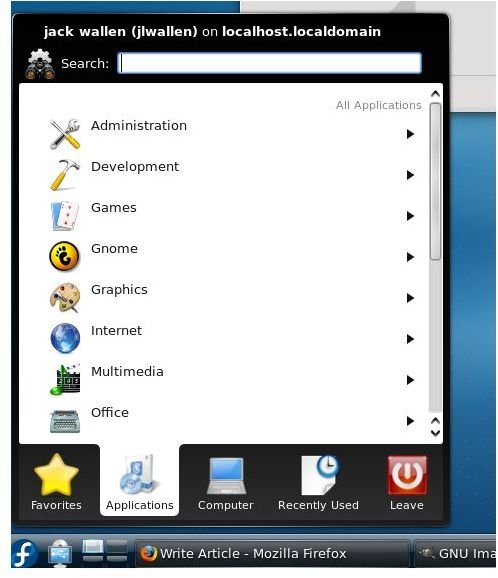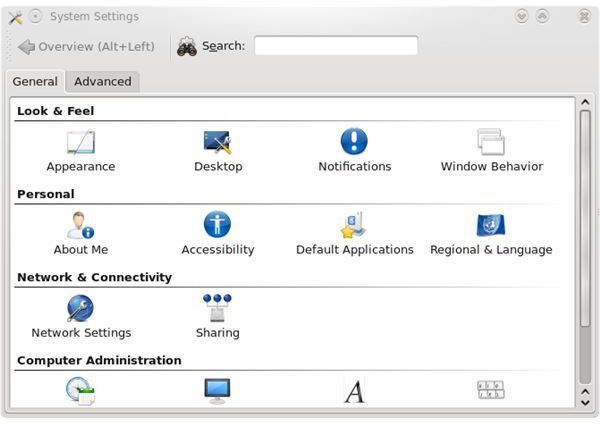KDE and Windows XP Desktops - KDE vs. Windows XP
The Desktop
The XP Desktop
- Panel (taskbar): Outside of desktop icons, this is where all applications are launched and small dockable applications live.
- Panel shortcut icons: Small icons that launch applications.
- Notification Area: Area of panel that houses tiny applets that give information and house applets that have no normal presence on the desktop.
- Desktop icons: Icons used to launch applications from the desktop.
- Show Desktop button: When clicked will hide all open, maximized windows.
- Window List: Small portion of the Panel that holds minimized windows.
- Main (or Start) Menu: This is the main menu where applications are launched.
KDE
- Kicker: This is the panel for KDE. It serves the same purpose as the Panel in XP.
- Panel Launchers: These serve the same purpose as Panel Shortcut Icons in XP.
- Notification Area: This serves the same purpose as the XP Notification area.
- Desktop Icons: These serve the same purpose as the XP icons.
- Widgets: These are small applications that can be placed on the desktop that serve a number of purposes.
- Main Menu: This serves the same purpose as the XP Main Menu.
KDE Panel
The Panel
As you can see (in the image above) the KDE panel looks very much like the XP panel. This feature also acts very much like the XP panel.
KDE Main Menu

KDE Menu
If you don’t like the tabbed version of the KDE menu you can change it to the Classic KDE menu by Ctrl-right click in the menu icon on the Panel. This panel does away with the tabs and sets up the panel in a standard, sub-menu layout.
Control Panel

KDE Control Panel
The Control Panel (or System Settings window) is where you configure everything from the look and feel of your desktop to hardware settings. Some of these actions will require the root (administrator) password. In the Advanced tab there are a number of features that include autostart applications (applications that automatically start when KDE starts), the KDE Wallet (keeper of passwords), Service Manager (controls what systems start at boot), and many more.
What You Expect
You will be happy to know that, within the KDE desktop, things work exactly as you would expect. Icons can be double clicked to launch applications, you can drag and drop in the file manager, KDE applications (such as KOffice) are fully aware of the entire desktop such that interaction between applications and the desktop is seamless, and the configuration/addition of elements works precisely as you have grown used to within the Windows XP desktop.
The elements are all similar. The action is similar. The look and feel is similar. Outside of the KDE Widgets (which add a dash of Apple OS X to the desktop), migrating from Windows XP to the KDE 4 desktop should be a complete no-brainer to even the newest user.
This post is part of the series: Migrating from Windows XP to Linux
How to migrate your Windows XP desktop environment to Linux KDE or GNOME. Simple step-by-step guides to migrating from Windows to Linux.
